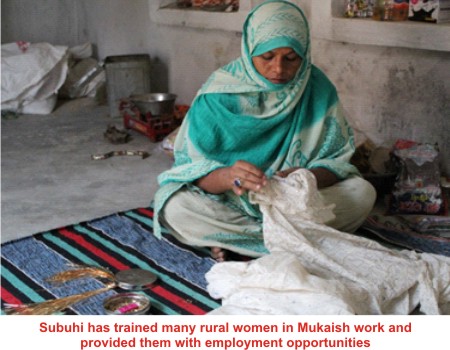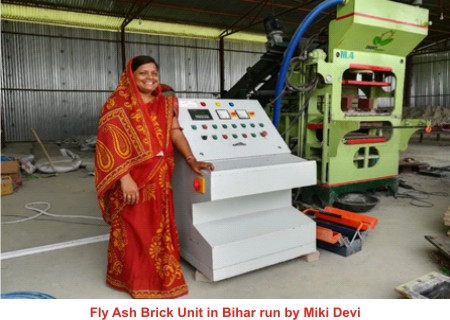Women Entrepreneurs - Stories of Change
Entrepreneurship is an area which is associated with risk taking and multi-tasking. Considering the high stakes in this sphere mostly this avenue is not considered for women. Nevertheless women have been able to establish themselves in this sphere. Women have not only made significant strides as technological entrepreneurs but also as social entrepreneurs. Through this process, women have been able to create an ecosystem of entrepreneurship by enabling peer to peer learning.
This article attempts to elaborate the successful examples of women entrepreneurs who have influenced the ecosystem in each of the Sustainable Development Goals (SDGs). Sustainable Development Goals are national wise set of 17 goals which each country has to accomplish by 2030.
1. Lijjat Papad Case Story
Lijjat Papad is an example of a group enterprise run by rural women of Gujrat. Back in 1959, the initiative started when 7 women with a borrowed sum of money of INR 80 started making and selling papad. Now Lijjat Papad has 82 authorised branches all over India and internationally as well. Shri Mahila Griha Udyog which started this small initiative has become a big brand now with diversification of products and branches. This is not just an initiative about making profit but also an example of how solidarity and peer to peer learning helped the network of Lijjat Papad grow, which currently comprises of 43,000 women. The impact of this case story can be aggregated in the Sustainable Development Goals of:
-
Goal 1 & Goal 2: No Poverty and Zero Hunger - as women with an initial borrowed capital of INR 80 were able to generate a huge turn over within 5 years. Also the initiative of the group helped in achieving food security.
-
Goal 5: Gender Equality - as women were able to economise and capitalise on their existing strength and enter into business ventures which were male dominated.
-
Goal 8: Decent Work and Economic Growth - as this initiative is an example of collaborative work environment and regional development
 2. Subuhi Begum’s Case Story of Networking
2. Subuhi Begum’s Case Story of Networking
Subuhi Begum was a student of TARA Akshar+, an adult literacy initiative from Gauri Khalsa village, Kachhauna block of Hardoi, Uttar Pradesh. She had learnt ‘mukaish’ hand embroidery and was making an earning worth Rs 7,000 before the literacy programme. Being illiterate she faced difficulties in calculating the budget and the cost of the material for making embroidered fabric. Through TARA Akshar+ she could overcome these difficulties. The initiative then gave Subuhi Begum a platform to reach out to a lot of people. Through this platform she skilled about 50 - 60 women in ‘mukaish’ embroidery and also assigned orders to them. Subuhi was able to expand her work and now she earns about Rs 20,000 per month. Along with this, she manage a kirana shop, which is the family’s additional source of income. Today Subuhi is considered as one of the ‘influential opinion leaders’ of the village.
This story of change can be directly aligned to:
-
Goal 4: Quality Education - as after attending the literacy initiative she not only learnt how to read and write, but the ecosystem and learning setup helped her develop self-esteem to shape a better future.
-
Goal 8: Decent Work and Economic Growth - Subuhi was not only able to expand her work but was also able expand her network. Through this she was able to provide work to 50 - 60 women of her village. This is how decent work was given to women and economic growth of the village also took place.
-
Goal 12: Responsible Consumption and Production - Subuhi aided the process of sustainable production in the village by skilling and connecting 50 - 60 women to livelihood.
3. The only woman led Fly Ash Brick Unit in Bihar

The story of Miki Devi from Araria district of Bihar is an example of how women in rural set ups are breaking the glass ceiling. Miki Devi did technological innovation in her district by setting up a Fly Ash Brick Enterprise with an initial investment of 45 lakhs. This technological innovation led to an annual turnover of 12 lakhs. This story of entrepreneurship is not only an example of a woman breaking the glass ceiling in a difficult geography like Bihar but is also an example of green technology. This story of change can be attributed to the given goals:
-
Goal 7: Affordable and Clean Energy - the substitution from red bricks to fly ash bricks is an example of how rural women show a traction towards clean and green technology.
-
Goal 9: Industry, Innovation and Infrastructure - as this case story sets an example of how Miki Devi shifted her focus from producing red bricks to fly ash bricks which itself is an example of sustainable innovation.
-
Goal 10: Reduced Inequalities - since Miki Devi was able to show technological innovation in geography like Bihar which is primarily male dominated. This also influenced the ecosystem since Miki Devi is now a role model for many rural women.
4. ‘Puncha Vayal’ Farming Story
Kuttanad is a delta region in Kerela where rice farming is done below sea level. This is a traditional rice farming practice done by mostly women of the community. Traditional knowledge of rice cultivation is an example of achieving food security and water conservation. The local communities have passed this knowledge from generation to generation due to which it is recognised as a ‘Globally Important Agricultural Heritage System’ by the United Nations Food and Agricultural Organisation. The striking feature of this is that it is a community led initiative where women play a significant role as farmers, transmitters and keepers of the traditional farming knowledge. The story is reflective of the given goals:
-
Goal 13: Climate Action - as the women of the local community through transmission of traditional agricultural knowledge are able to mitigate the effects of climate change due to which the initiative has carried on for 150 years.
-
Goal 14 and 15: Life Below Water & Life on Land - the biodiversity is preserved through this kind of community led agricultural practice.
-
Goal 16: Peace, Justice and Strong Institutions - the cohesive community driven practice that has led to transmission of this knowledge system over the generations is an example of community solidarity which is itself an example of a strong institution.
Conclusion
Stories at the ground level no matter how small, have a bearing on the entire ecosystem. The impact is then intensified, which makes it essential for recording these learnings from the ground.
The stories also encapsulate how women proactively knit the ecosystem and move ahead in their entrepreneurial or livelihood avenues. The main target is not only limited to self-consumption or benefit but is about holistic development of family and the ecosystem. ■
Trina Das
tdas@devalt.org
References
1. https://www.researchgate.net/
publication/312522683_Success_Stories_of_Women_Entrepreneurship-Case_Studies
2. http://www.lijjat.com/
3.http://www.fao.org/family- farming/ detail/en/c/283069/